You want to take it all in, but it’s impossible.
Should you focus on the emerald mountain backdrop topped with clouds floating like puffy jelly beans? Or the foreground of willowy reeds swaying on a placid lake? Inevitably your eyes are drawn instead to the castle, a fairy-tale version so full of crenellations and so gleaming white that even Disney wouldn’t dare. The juxtaposition of pastoral nature and human endeavor is ethereal.
By the time a pair of swans paddle into your view of Kylemore Abbey in western Ireland, the presence of pure beauty overwhelms. A mere picture will not suffice; you must draw or write or paint.
“It’s easier to focus when you have an experience different from what you’re used to — that’s always a growth period.”
“Kylemore is away from Dublin, out in the beautiful mountains,” said Therese Konopelski, a Notre Dame senior from Maryland. “It’s been very inspiring. I feel like you can get a larger body of work done than when you’re in a city and you can’t hear yourself talk.”
That’s the idea behind two summer programs that Notre Dame runs at the abbey in the Connemara mountains. The debut of a month-long graduate art residency last summer adds another option on top of a three-credit creative writing seminar that began in 2016. The 19 students spent the first week at the Dublin Global Gateway soaking in the city arts and lit scene, then spent the remainder at Kylemore Abbey, a 19th-century castle where Notre Dame has renovated a section for hosting guests.
Irish playwright Marina Carr joined Steve Tomasula, a writer and Notre Dame faculty member, to lead the writing students in discussions of Irish works, site-specific writing exercises and workshopping of their pieces. Maria Tomasula, Steve’s wife and a painter and faculty member, led the first art residency for 10 graduate students from Notre Dame, the New York Academy of Art and the Royal Hibernian Academy of Art in Dublin.
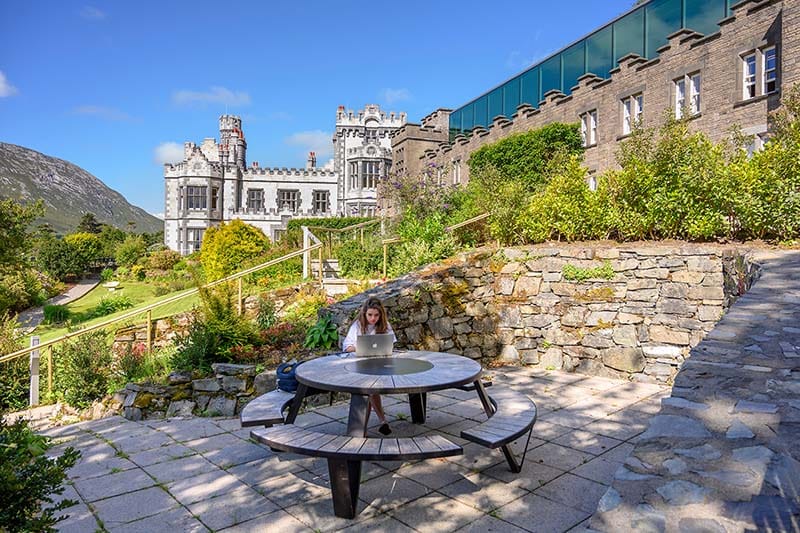
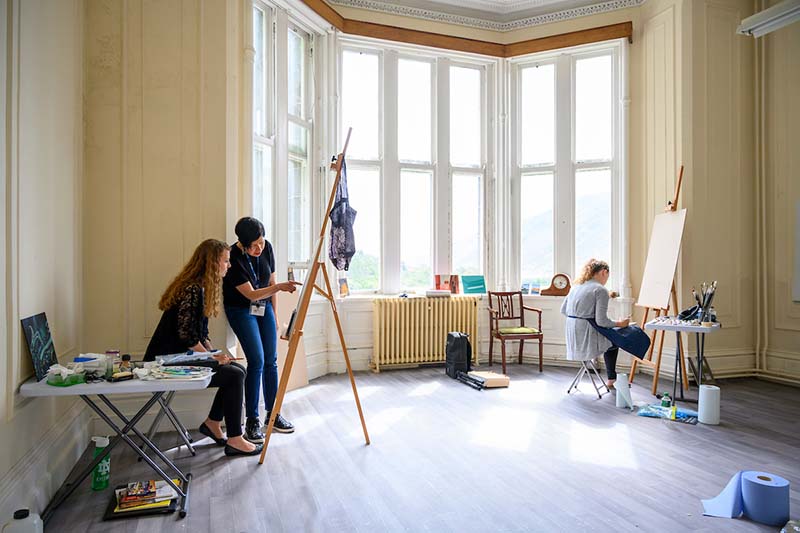
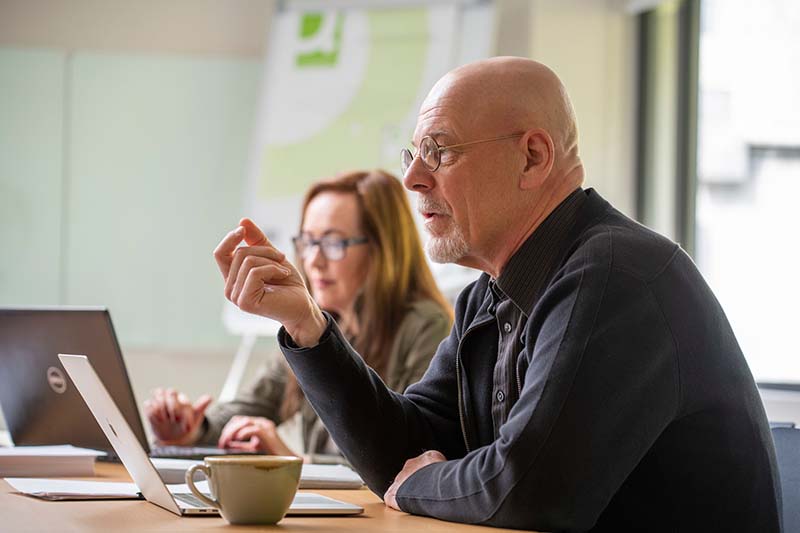
The art program came together this year with the vision and support of one of Maria’s former students, Jaclyn Dooner, who earned her undergraduate degree at Notre Dame and her MFA at the New York Academy of Art. Including Irish artists expanded the cross-cultural interactions.
“There are students from these three institutions that probably wouldn’t have any contact with each other otherwise,” Maria Tomasula said. “The three programs are very different, which is an advantage because each person learns from the other students here and gets a sense of the values each program promotes.”
Steve Tomasula said his route to Kylemore was also fortunate. Valerie Sayers, another creative writing teacher at Notre Dame, co-founded the seminar and co-taught it in previous years. The program brought in famous writers such as Kevin Barry, Alice McDermott, Seamus Deane and John Banville. Heading for retirement, Sayers recruited her colleague Azareen Van der Vliet Oloomi, concurrent faculty in the department of romance languages and literatures in the Nanovic Institute for European Studies and the Kroc Institute for International Peace Studies, to take over her role.
The students have classes in the mornings, as well as afternoon excursions that complement and inspire their writing assignments. For instance, they read J.M. Synge’s Aran Islands notebooks and on a Saturday took the ferry to one of the three islands in Galway Bay. Synge visited the islands from 1898 to 1901 to study the old ways of Ireland so foreign to a well-off Dubliner, and he drew upon his travels for his plays, including his masterpiece “The Playboy of the Western World.”
“I’ve been pushing the idea that this time and place isn’t yours — but use their concerns as a way to ask what might be your own,” Steve Tomasula said. “One of the things it throws into the foreground is who the students are and where they come from. You’re in this alien place that’s so different. I don’t think you know what an American is until you leave the country.”
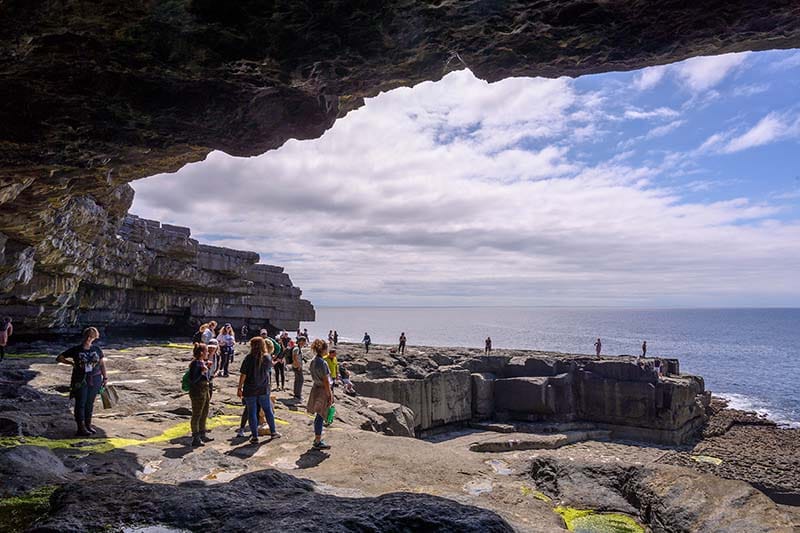
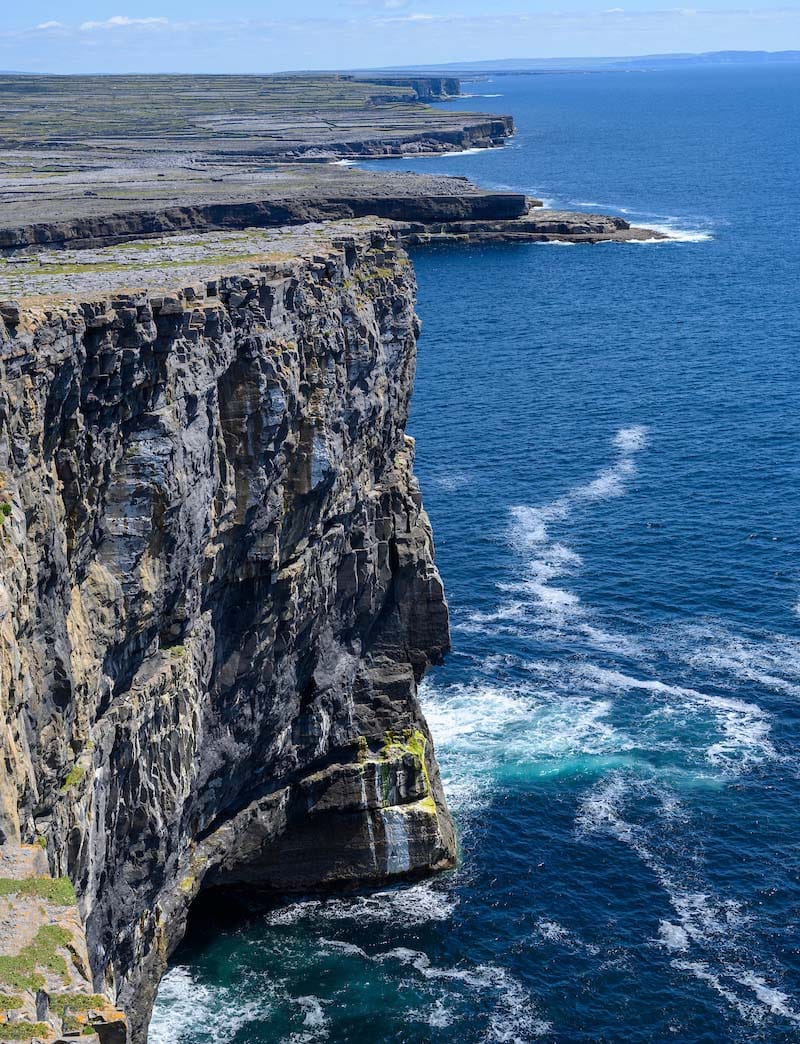
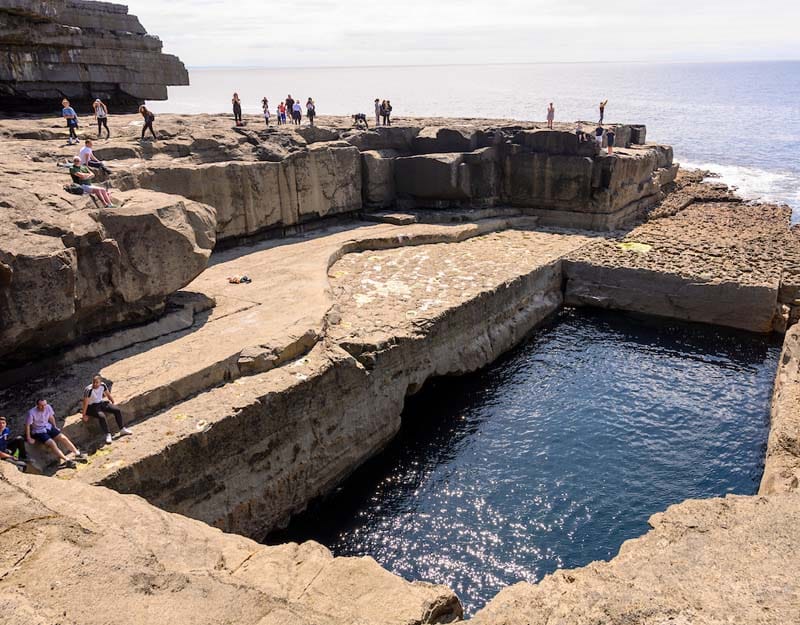
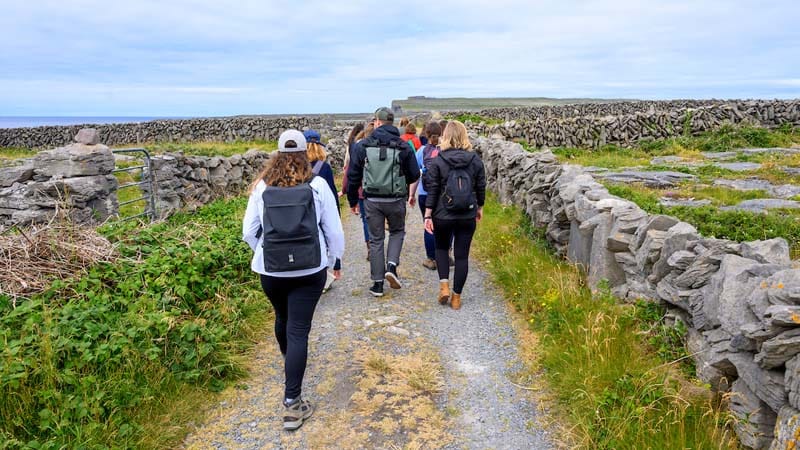
The students marveled at the island’s hundreds of miles of stone walls, a tangible reminder of millennia of human effort every bit as massive as the Egyptian pyramids, if less technical from an engineering standpoint. The endless walls served the dual purpose of separating sheep pastures and property holdings, as well as clearing the rocky land for farming. The students walked along the ocean shore and hiked up a hill to a cliff-side ring fort where Bronze Age residents retreated to fight off invading hordes.
On the ferry back to the mainland, New York Academy of Art student Austin Harris reflected on his first trip outside the United States. He said Irish art seems to exude a sense of place more clearly than most American art, possibly a reflection of different histories of land ownership.
“As an artist, you grow the most when you’re by yourself,” Harris said. “But you also learn from cultural differences that make you think.”
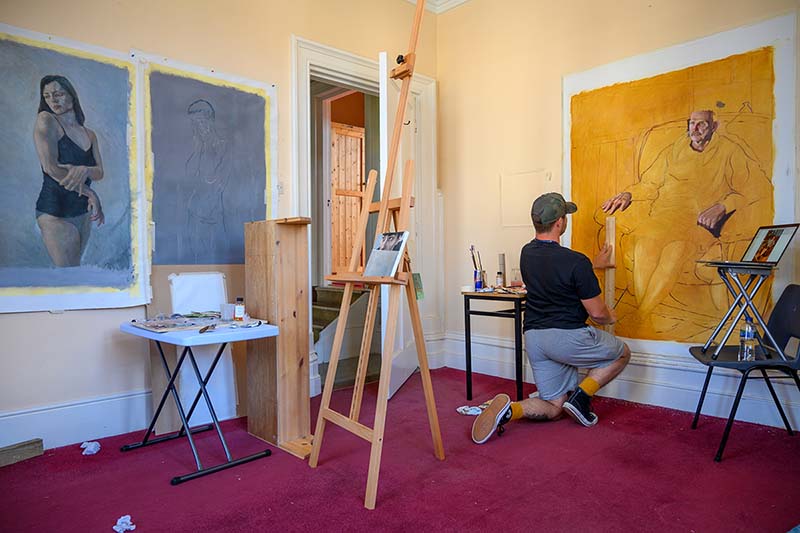
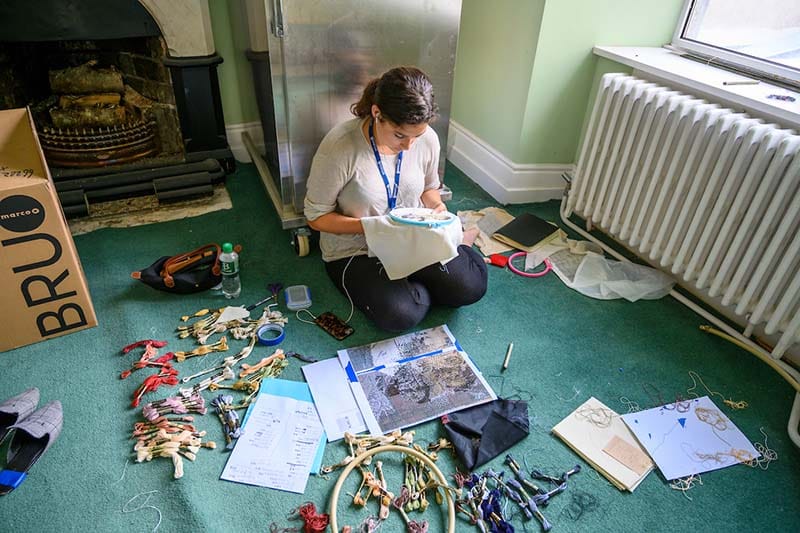
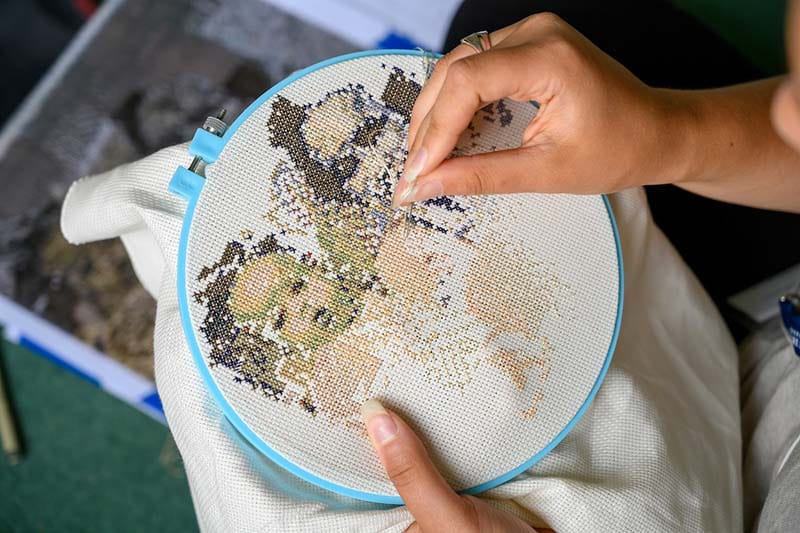
Notre Dame graduate student Cassandra Schifano works on her project in another art studio room.
Notre Dame student Cassandra Schifano agreed. She’s a sculptor who used the art residency to work on weaving and creations with fibers.
“The visual imagery is stimulating even if I’m not a landscape painter,” Schifano said. “It’s important to see new things to get out of a rut. It’s easier to focus when you have an experience different from what you’re used to — that’s always a growth period.”
“I hope they get a closer awareness of who they are as a writer and how malleable is this medium that they’ve been engaged in here.”
Marina Carr, the Irish playwright co-teaching the writing seminar, encouraged the students to write dialogue and theater even if it’s outside their comfort zones. She had them read plenty of Samuel Beckett, an Irish icon who wrote the absurdist classic “Waiting for Godot.”
Steve Tomasula said the outside-the-classroom experiences in Dublin and in Connemara help the students expand their writing horizons. Rather than think of writing in terms of genre (poetry or prose or theater), he pushes them to find the right form for what they’re trying to say.
“I hope they get a closer awareness of who they are as a writer and how malleable is this medium that they’ve been engaged in here,” he said. “The many roads there are to nirvana that you can take as a writer.”
Maria Tomasula gave two examples of how important the experience of physical space is for the artists. An Irish dancer explained how the small and crowded houses led to a distinctive style of Irish dance over centuries. They also visited Irish artist Mick O’Dea in his studio, a Georgian townhome built for the wealthy but later turned into tenement housing for the poor.
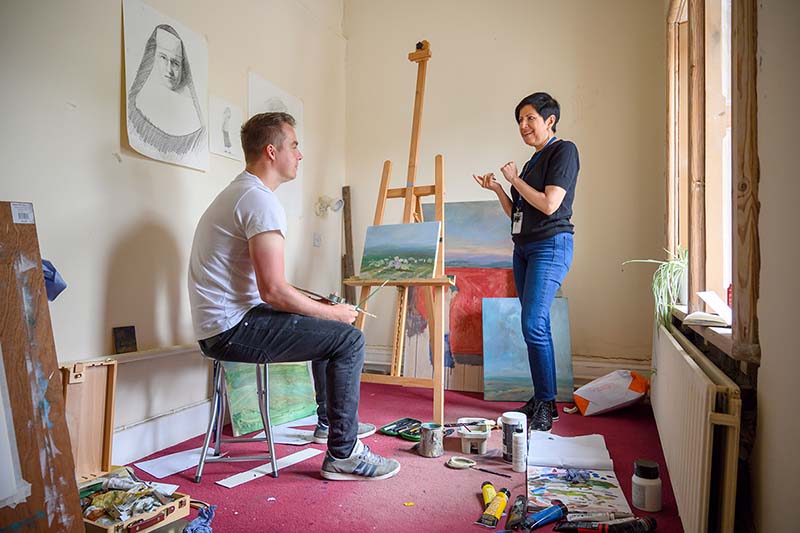
“You walk into the place and you feel the history as it’s been absorbed on the surfaces,” she said. “The worn-down staircases, the grandness of a beautiful salon where you can imagine afternoon tea or working people. You’re not just imaginatively feeling these places, you’re actually there.”
The two creative programs share this philosophy, which Kylemore Director Lisa Caulfield calls “learning through the soles of your feet.” That’s why the students take walking tours of Irish history and the writings of James Joyce, why they went to see a play by Roddy Doyle, why they went on a Famine Walk that included deserted potato fields and a sheep farm that survives through tourism because there’s not enough profit in wool.
They wrote on their laptops over coffee in Dublin cafes, as well as on the banks of Lough Pollacappul, gazing down on a mirrored reflection of the mountains. They mixed colors and deepened shadows with languid brush strokes on canvases set up on easels in attic garrets that served as studios in the back of the Kylemore castle.
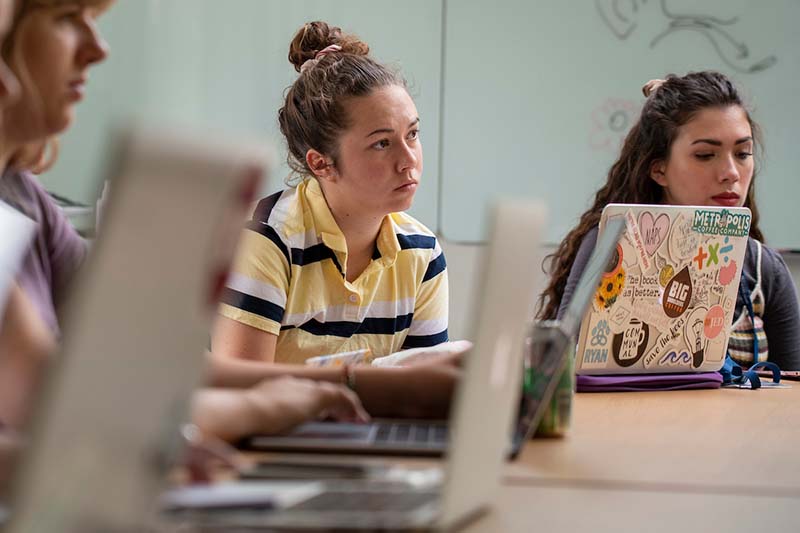
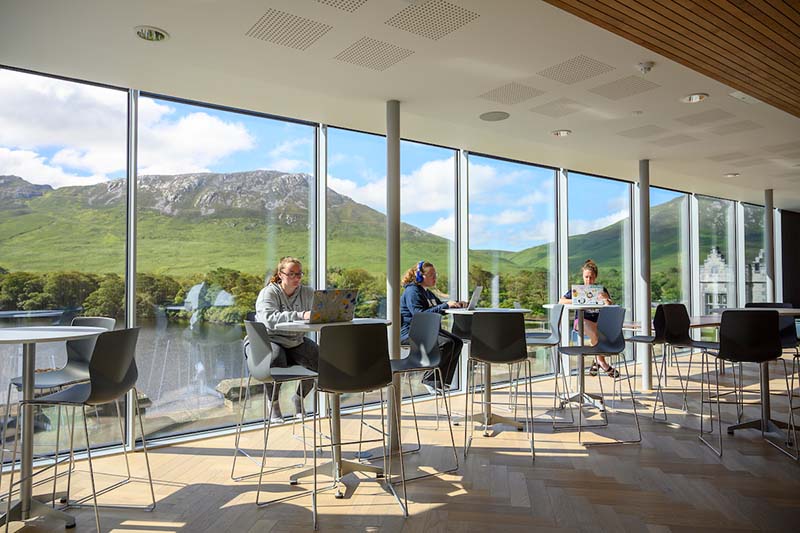
The luxury of time and place was not lost on the students. Dessi Gomez, a junior from California, said it’s hard to give yourself the time to write on campus.
“There are great opportunities to hike by yourself and process things and think about writing,” Gomez said. “The other day, I was burnt out from class and walked down the path near Kylemore. The beauty of the place helped put it in perspective.”
The castle and a Victorian walled garden on the property were built in 1868 for the family of Mitchell Henry, a wealthy pathologist and eye surgeon. The Duke and Duchess of Manchester bought Kylemore in 1903 but ran into financial troubles before World War I.
Benedictine nuns from Ypres, Belgium, arrived at Kylemore in 1920 after their former abbey was destroyed in the war. The nuns restored the property and opened a boarding school for girls that prospered until 2010.
After a fire in the 1950s, the nuns had built a new building next door to house the school while the castle was repaired. Notre Dame partnered with the Benedictine community in 2015 and transformed that new building into the Kylemore Abbey Global Centre, which includes a 16-room residence hall, dining facilities and communal space. The nuns still operate the castle and walled garden as a popular tourist attraction.
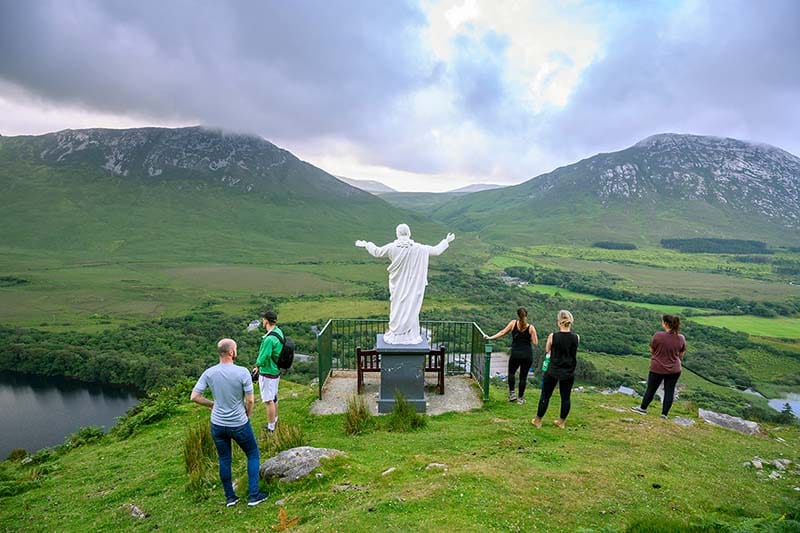
Before class one day, the art students set out on a crisp summer morning for a Sacred Heart statue set on the mountain behind the abbey. Several weeks of afternoon hikes meant they kept a brisk pace. While only 20 minutes straight up to the statue, it felt like a new perspective.
Rather than take pictures, the artists huddled and lingered in the grassy clearing around the statue. A hearty breakfast below could wait. The shadows of clouds drifted across the lake. With altitude, further mountains beyond were visible. The students seemed to etch the possibilities in their minds’ eye for inspiration down the long and winding road.